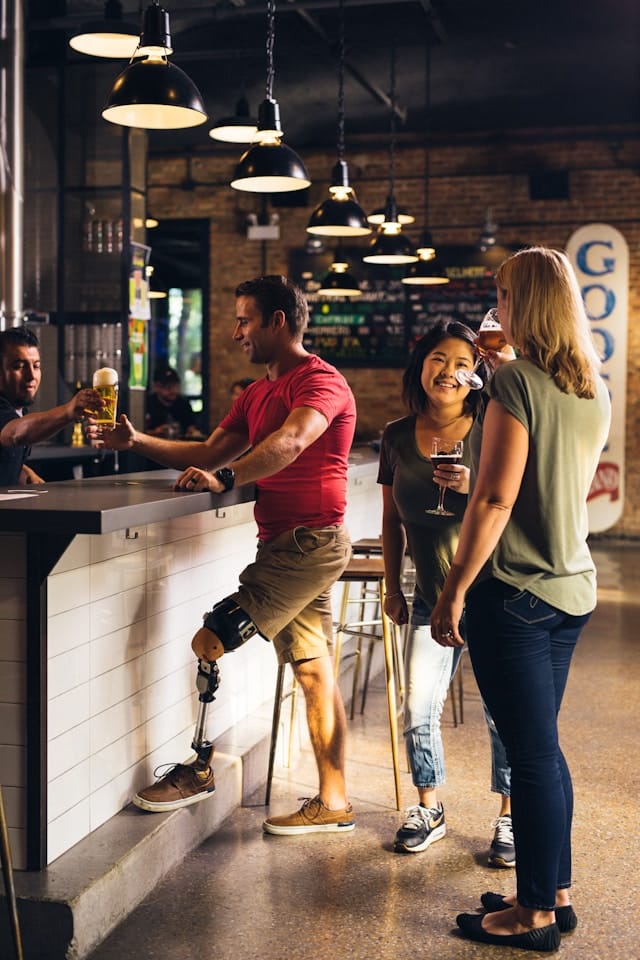In the world of prosthetics, technology is constantly evolving to provide amputees with better, more functional, and more comfortable options. From artificial limbs that respond to muscle movements, to hands that can sense touch, to knees that adapt to different terrains, the field is making incredible strides. Let’s delve into the latest advancements in smart prosthetics that are revolutionizing the possibilities for amputees.
The Evolution of Prosthetic Limbs
Prosthetic limbs have come a long way from the crude devices of the past. In the early days, prostheses were primarily designed to fill a physical gap in the body’s form, offering little functionality beyond that. Today, thanks to advances in technology, modern prosthetics are not only designed to mimic the look and feel of natural limbs, but also to provide the full range of human movements.
Additional reading : What Are the Economic Advantages of Urban Farming in Post-Industrial UK Towns?
A scholar’s paradise, PubMed is a rich source of information that charts this evolution of prostheses. It shows how the initial focus was on the aesthetic appeal and basic mobility of prosthetics. However, the emphasis has now shifted to creating devices that are integrated with the human body’s systems, operated with muscle control and offering the user a high level of functionality and comfort.
Smart Prosthetics: The Power of Technology
The application of technology in the field of prosthetics has led to the development of ‘smart’ prosthetics – devices that can communicate with the human body and respond accordingly. The use of sensors and microprocessors has made it possible to create artificial limbs that can replicate, to a significant extent, the functions of a natural limb.
In parallel : How to Cultivate Sustainable Fish Populations in UK’s Aquaculture Industry?
Smart prosthetics can be programmed to recognize and interpret the electrical signals generated by muscle movements in the body. These signals are then translated into specific actions by the prosthetic limb. With ongoing advances in technology, the functionality of these devices is only set to increase.
A study published in PubMed states that the latest smart prosthetic devices can even mimic the sense of touch, providing the user with a near-natural experience. These advancements are radically changing the lives of amputees, helping them regain their independence and improve their quality of life.
The Google Scholar on Prosthetic Hands
Google Scholar is another comprehensive source of academic resources exploring the advances in prosthetic hands. The traditional prosthetic hand, which was essentially a cosmetic device with little to no functionality, is being replaced with robotic hands that offer a high level of control to the user.
These hands are equipped with sensors that can detect muscle movements in the residual limb. The prosthetic hand then replicates these movements, allowing the user to perform complex tasks such as gripping and manipulating objects with relative ease.
The latest in prosthetic hand technology is the development of hands that provide the sensation of touch. Using sophisticated systems, these hands can deliver feedback to the user about the force they are applying while gripping objects and the texture of the object they are touching.
Lower Limb Prosthetics: Beyond the Knee
While upper limb prosthetics, particularly artificial hands, have received a lot of attention, significant progress has also been made in the field of lower limb prosthetics. The development of smart knees and feet is providing amputees with unprecedented levels of mobility and independence.
One of the key developments in this area is the introduction of microprocessor-controlled knees. These devices use sensors to monitor the user’s gait and make real-time adjustments to provide a smooth and natural walking experience.
Another significant advancement is the development of prosthetic feet that adapt to different terrains. The foot adjusts its alignment based on the surface, enabling the user to walk with ease on uneven ground, slopes, and stairs.
A Look to the Future: Next-Generation Prosthetics
The future of prosthetics is incredibly promising. The integration of artificial intelligence (AI) and machine learning into prosthetic devices is one of the most exciting prospects. These technologies have the potential to significantly enhance the functionality and adaptability of artificial limbs.
Imagine a prosthetic limb that learns and adapts to your unique way of moving, or a prosthetic hand that can anticipate your actions based on the task you are performing. These are no longer the stuff of science fiction, but are well within the realm of possibility.
In the world of smart prosthetics, the future is undoubtedly exciting. The technology is evolving at a rapid pace, providing amputees with better, more functional, and more comfortable options than ever before. The goal is not just to replace lost limbs, but to enhance human capabilities beyond their natural limits.
The unprecedented advancements in prosthetic technology are set to dramatically improve the lives of amputees, offering unparalleled levels of mobility, functionality, and independence. As we stand on the threshold of a new era in prosthetics, the possibilities seem limitless.
Virtual Reality: The New Frontier in Prosthetic Training
The integration of virtual reality (VR) into the field of prosthetics is a groundbreaking development. This technology is being used to train amputees in the use of their new prosthetic limbs, particularly in the case of high-tech devices that require more complex control.
Virtual reality provides a safe and controlled environment for amputees to practice using their prosthetic limbs. It offers a platform where they can learn to perform activities of daily living, such as walking, running, or picking up objects, without the risk of injury. This training can significantly shorten the adjustment period following the fitting of a new prosthetic limb, as the user can become proficient in its control in a virtual setting before attempting these actions in the real world.
In addition, virtual reality offers the potential for more immersive and interactive training experiences. For example, a study available on PubMed Google showed that a VR-based training program was successful in improving the motor control and functional performance of individuals using a prosthetic hand. This was achieved by providing real-time visual feedback on the user’s performance, enabling them to correct any errors immediately.
Moreover, virtual reality can also provide sensory feedback to the user. This is particularly useful in the case of upper limb prostheses, where the loss of tactile sensation is a major issue. Integrating haptic feedback into the training program can help users learn to interpret the sensory information provided by their prosthetic hand, enhancing their ability to manipulate objects effectively.
Conclusion: The Future of Smart Prosthetics
In the realm of smart prosthetics, the future is undoubtedly bright. The technological innovations and advancements in this field are not only aimed at replacing the limb loss but are striving to offer a level of functionality and comfort that surpasses the capabilities of the human body.
Prosthetic limbs are no longer viewed as simple body powered replacements. Instead, they are evolving into sophisticated bionic devices that can provide real-time sensory feedback, adapt to different terrains, and are controlled by targeted muscle reinnervation. The integration of artificial intelligence and machine learning adds another layer of innovation, enhancing the adaptability and functionality of these devices.
Moreover, the emergence of virtual reality as a training tool is revolutionizing the way amputees learn to use their new limbs. It offers a safe, controlled environment for practice and provides real-time feedback on the user’s performance, promoting the effective use of the prosthetic limb.
The integration of these technologies is set to enhance the lives of individuals who have experienced limb loss, offering them an unprecedented level of mobility, independence, and quality of life. The information available on platforms like Google Scholar and PubMed Google attests to the significant strides that are being made in this field.
As we peer into the future of prosthetics, it is clear that the possibilities are limitless. With technology continually evolving, the goal is not just to match the functionality of the human body, but to surpass it, pushing the boundaries of what is possible and redefining the concept of a “limb”.











